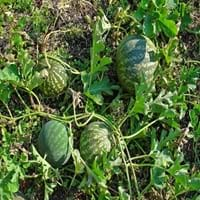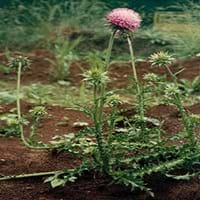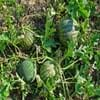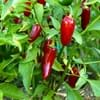Life Span
Annual
Biennial
Type
Vegetable
Bulb, Flowering Plants
Origin
Hybrid origin, Africa, Southern Africa
World/Pandemic, Europe, Asia
Types
Not Available
Crocus tommasinianus, Crocus etruscus, Crocus vernus, Crocus cambessedesii
Number of Varieties
Not Available
Habitat
along watercourse, Grassland
gardens, Grassland, open Woodlands, orchards, Pastures, tropical environments
USDA Hardiness Zone
10-12
2-10
AHS Heat Zone
12-4
10 - 1
Sunset Zone
A3, H1, H2, 1a, 1b, 2a, 2b, 3a, 3b, 4, 5, 6, 7, 8, 9, 10, 11, 12, 13, 14, 15, 16, 17, 18, 19, 20, 21, 22, 23, 24
21,22
Habit
Prostrate/Trailing
Upright/Erect
Flower Color
Yellow
Red, Violet
Flower Color Modifier
Bicolor
Bicolor
Fruit Color
Green, Crimson, Dark Green
Not Available
Leaf Color in Spring
Light Green
Green, Dark Green
Leaf Color in Summer
Green, Gray Green
Dark Green
Leaf Color in Fall
Green, Gray Green
Dark Green
Leaf Color in Winter
Not Available
Light Green
Leaf Shape
Irregular
Ovate
Plant Season
Summer, Fall
Spring, Summer, Winter
Sunlight
Full Sun
Full Sun, Partial Sun
Growth Rate
Very Fast
Very Fast
Type of Soil
Loam
Clay, Loam, Sand
The pH of Soil
Neutral
Acidic, Neutral, Alkaline
Soil Drainage
Well drained
Well drained
Bloom Time
Indeterminate
Spring, Late Spring, Early Summer, Summer
Tolerances
Drought
Pollution, Drought, Salt, Soil Compaction
Where to Plant?
Container, Ground
Container, Ground
How to Plant?
Seedlings, Transplanting
Seedlings
Plant Maintenance
High
Low
Watering Requirements
Requires consistently moist soil, Requires regular watering, Requires watering in the growing season, Water Deeply
Average Water Needs, Do Not over Water, Never Over-water, Requires regular watering
In Summer
Lots of watering
Lots of watering
In Spring
Moderate
Moderate
In Winter
Average Water
Average Water
Soil pH
Neutral
Acidic, Neutral, Alkaline
Soil Type
Loam
Clay, Loam, Sand
Soil Drainage Capacity
Well drained
Well drained
Sun Exposure
Full Sun
Full Sun, Partial Sun
Pruning
Remove damaged leaves, Remove dead leaves, Remove dead or diseased plant parts
Prune to stimulate growth, Remove damaged leaves, Remove dead leaves, Remove deadheads
Fertilizers
fertilize in growing season, Nitrogen, Potassium
Nitrogen, Phosphorous, Potassium, Requires high amount of nitrogen
Pests and Diseases
brown-spot needle blight, Cutworms, Downy mildew, Flea beetle, Flea Beetles, Fungal Diseases, fungus, Fusarium wilt, Powdery mildew, Red blotch
Insects, Red blotch
Plant Tolerance
Drought, Salt
Not Available
Flower Petal Number
Single
Not Available
Foliage Texture
Coarse
Coarse
Foliage Sheen
Matte
Glossy
Attracts
Bees, Insects, Squirrels
Flying insects
Allergy
Stomach pain, Throat itching
Diarrhea, Nausea, Vomiting
Aesthetic Uses
Ground Cover
Beautification, Showy Purposes
Beauty Benefits
Not Available
Not Available
Environmental Uses
Air purification, Food for animals, Food for birds, Food for insects, Versatility
Air purification, Food for insects
Medicinal Uses
High blood pressure, Nutrients
Unknown, Unknown
Part of Plant Used
Fruits
Stem
Other Uses
Used As Food, Used for its medicinal properties, Used in making beverages
Decoration Purposes
Used As Indoor Plant
No
No
Used As Outdoor Plant
Yes
Yes
Garden Design
Edible, Fruit / Fruit Tree, Herb / Vegetable, Tropical, Vine
Not Available
Botanical Name
CITRULLUS lanatus 'Crimson Sweet'
CARDUUS nutans
Common Name
Crimson Sweet Watermelon, Watermelon
Musk Thistle, Nodding Thistle
In Hindi
तरबूज़
कस्तूरी थीस्ल
In German
Wassermelone
Nickende Distel
In French
Citrullus lanatus
Musk Thistle
In Spanish
Citrullus lanatus
Cardo de almizcle
In Greek
καρπούζι
musk Thistle
In Portuguese
Citrullus lanatus
musk Thistle
In Polish
Citrullus lanatus
Musk Thistle
In Latin
Citrullus lanatus
Carduus MOSCHUS
Phylum
Embryophyta
Magnoliophyta
Class
Magnoliopsida
Magnoliopsida
Order
Cucurbitales
Asterales
Family
Cucurbitaceae
Asteraceae
Clade
Angiosperms, Eudicots, Rosids
Angiosperms, Asterids, Eudicots
Tribe
Benincaseae
Cynareae
Subfamily
Cucurbitoideae
Carduoideae
Number of Species
Not Available
Not Available
Season and Care of Citrullus Lanatus and Musk Thistle
Season and care of Citrullus Lanatus and Musk Thistle is important to know. While considering everything about Citrullus Lanatus and Musk Thistle Care, growing season is an essential factor. Citrullus Lanatus season is Summer and Fall and Musk Thistle season is Summer and Fall. The type of soil for Citrullus Lanatus is Loam and for Musk Thistle is Clay, Loam, Sand while the PH of soil for Citrullus Lanatus is Neutral and for Musk Thistle is Acidic, Neutral, Alkaline.
Citrullus Lanatus and Musk Thistle Physical Information
Citrullus Lanatus and Musk Thistle physical information is very important for comparison. Citrullus Lanatus height is 15.20 cm and width 240.00 cm whereas Musk Thistle height is 90.00 cm and width 30.00 cm. The color specification of Citrullus Lanatus and Musk Thistle are as follows:
Citrullus Lanatus flower color: Yellow
Citrullus Lanatus leaf color: Light Green
Musk Thistle flower color: Red and Violet
- Musk Thistle leaf color: Green and Dark Green
Care of Citrullus Lanatus and Musk Thistle
Care of Citrullus Lanatus and Musk Thistle include pruning, fertilizers, watering etc. Citrullus Lanatus pruning is done Remove damaged leaves, Remove dead leaves and Remove dead or diseased plant parts and Musk Thistle pruning is done Prune to stimulate growth, Remove damaged leaves, Remove dead leaves and Remove deadheads. In summer Citrullus Lanatus needs Lots of watering and in winter, it needs Average Water. Whereas, in summer Musk Thistle needs Lots of watering and in winter, it needs Average Water.





